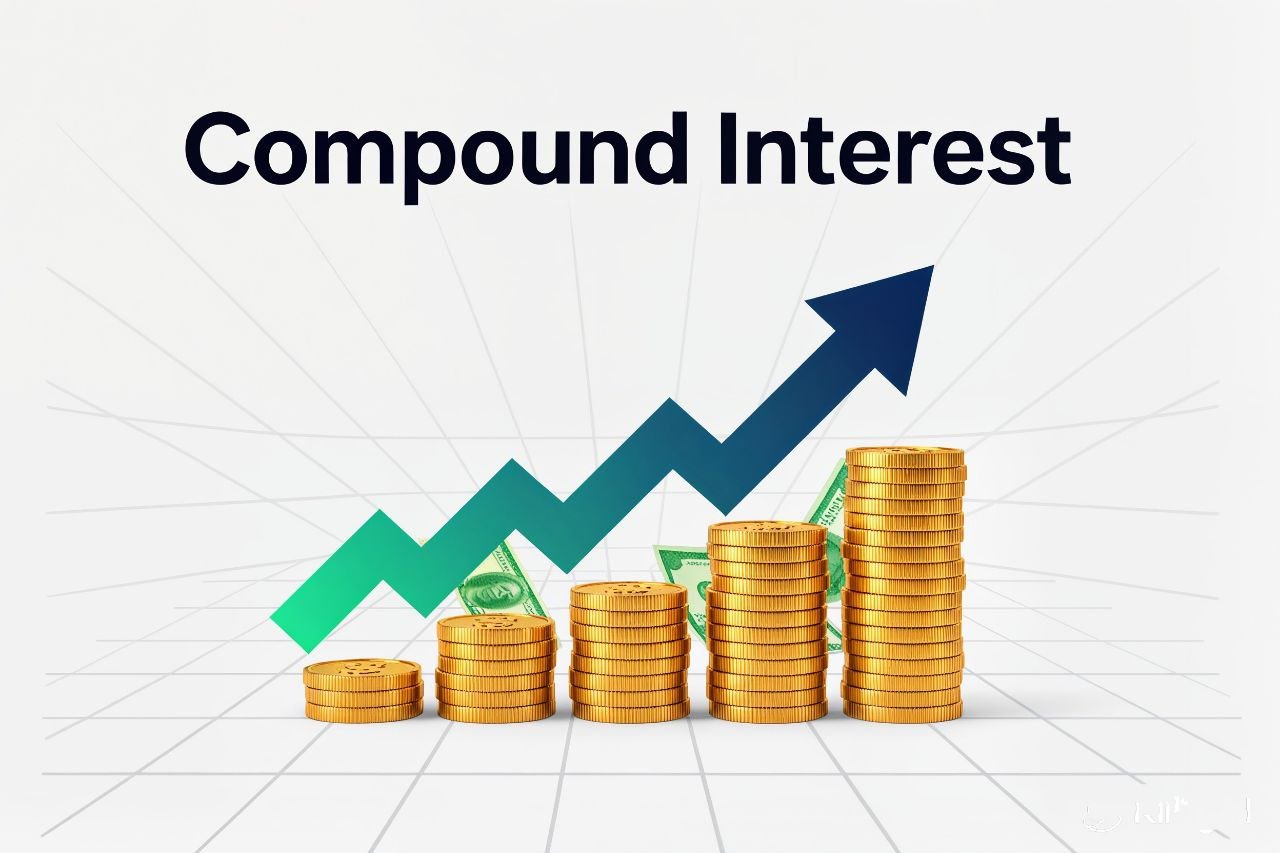Introduction
Have you ever wondered how some people grow their savings without working extra hours? The answer often lies in compound interest—a financial principle so powerful that Albert Einstein allegedly called it the “eighth wonder of the world.”
Compound interest is what allows your money to multiply on its own over time. Instead of just earning interest on your initial deposit, you also earn interest on the interest you’ve already accumulated. This “snowball effect” is the secret behind building wealth steadily—whether through savings accounts, investments, or retirement plans.
In this guide, we’ll break down how compound interest works, why it’s so important, and how you can use it to grow your wealth in 2025 and beyond.
What Is Compound Interest?
Compound interest means you earn interest not just on your starting money (the principal) but also on the interest that accumulates each period.
For example:
- You invest $1,000 at 10% annual interest. After one year, you have $1,100.
- In the second year, you don’t just earn interest on $1,000—you earn it on $1,100. Your money grows to $1,210.
- By the third year, you’re earning interest on $1,210, and the cycle continues.
This repeating process is why compound interest feels like magic. It transforms steady contributions into exponential growth.
The Formula for Compound Interest
You don’t have to be a math genius to benefit from compound interest, but here’s the basic formula: A=P(1+r/n)ntA = P(1 + r/n)^{nt}A=P(1+r/n)nt
Where:
- A = Final amount after compounding
- P = Principal (your starting money)
- r = Annual interest rate (in decimal form)
- n = Number of compounding periods per year
- t = Number of years
Example: If you invest $5,000 at 8% interest, compounded annually, for 10 years: A=5000(1+0.08/1)(1×10)=5000(1.0810)≈10,794A = 5000(1 + 0.08/1)^{(1×10)} = 5000 (1.08^{10}) \approx 10,794A=5000(1+0.08/1)(1×10)=5000(1.0810)≈10,794
That’s more than double your money in a decade without adding another dollar.
Why Compound Interest is Called the “Magic of Money”
- Time Is Your Best Friend
The earlier you start, the more your money grows. Even small contributions, given enough time, can turn into significant wealth. - Passive Growth
You don’t need to constantly add large amounts of money. Once invested, compound interest works in the background—growing your balance while you sleep. - Exponential Growth
Unlike simple interest, which increases in a straight line, compound interest grows exponentially. That means the longer your money compounds, the faster the growth accelerates.
Real-Life Example: Starting Early vs. Starting Late
Let’s compare two friends, Anna and Ben:
- Anna starts investing $200 per month at age 25 and stops at 35. She only contributes for 10 years.
- Ben waits until age 35 to start. He invests $200 per month until age 65—a full 30 years.
Who ends up with more money at retirement?
👉 Surprisingly, Anna has more wealth than Ben at age 65, even though she invested for a much shorter time. The reason is simple: Anna’s money had an extra decade to compound.
This example shows why starting early is the most powerful strategy when it comes to compound interest.
How You Can Use Compound Interest in Everyday Life
- Savings Accounts
High-yield savings accounts and fixed deposits may not offer huge returns, but compounding ensures your emergency fund grows steadily over time. - Stock Market & Index Funds
By reinvesting dividends instead of cashing them out, you accelerate compounding. Index funds and ETFs are excellent beginner-friendly tools. - Retirement Accounts (401k, IRA, etc.)
The longer you allow your retirement contributions to grow, the more secure your financial future becomes. Consistency is key. - Debt Compounds Too
Compound interest doesn’t only work for savings—it also works against you with credit card debt and loans. If you don’t pay off balances, interest compounds, making it harder to escape debt.
Common Mistakes Beginners Make
- Starting Too Late – Waiting even a few years can cost you thousands (or even millions) in lost growth.
- Pulling Money Out Early – Interrupting compounding slows the snowball effect. Stay consistent.
- Ignoring Fees – High investment fees eat into your returns. Always choose low-cost funds or platforms.
- Chasing Quick Gains – Trying to time the market or following hype can derail your compounding journey.
Practical Tips to Maximize Compound Interest in 2025
- Start as early as possible—even with small amounts.
- Automate savings or investment contributions each month.
- Reinvest dividends and interest instead of withdrawing them.
- Choose platforms with low fees to maximize growth.
- Keep your money invested long-term and avoid panic selling during market downturns.
Disclaimer: This article is for educational purposes only and does not provide financial advice. All investments carry risks, including potential loss of principal. Please consult a licensed financial advisor before making decisions.
